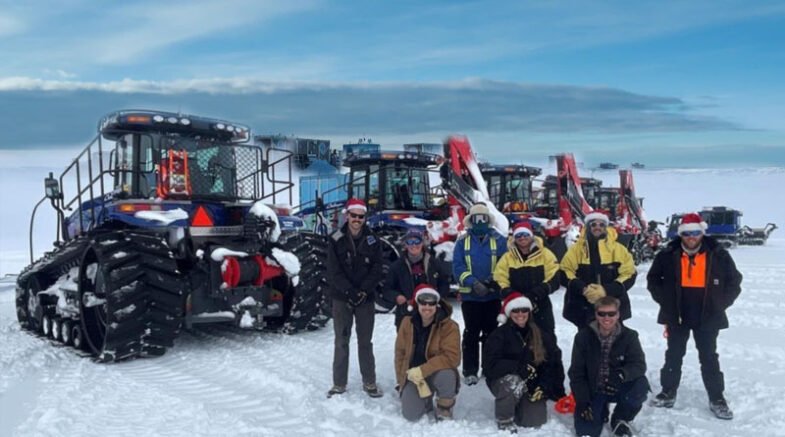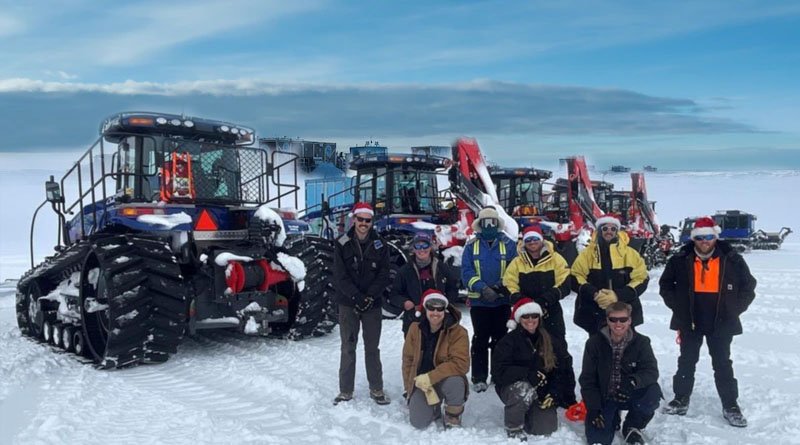In search of a million-year ice core, Australia’s most ambitious polar exploration project in twenty years has set off for the Antarctic interior.

On December 23, a convoy of five tractor trains left Casey research station in East Antarctica to test an over-ice route to Little Dome C, the location of the million-year ice core.
To support the scientific drilling project, five Antarctic-adapted tractors pull specially designed sleds of containerized living quarters and equipment.
If the convoy is able to travel the entire, 1200 km to Little Dome C, the teams will set up camp and begin drilling as soon as next summer. This season, the goal is to forge as much of the path as possible and put the specialized travel gear to the test.
The convoy’s mission is not an easy one. Extreme weather, changing ice conditions, and difficult and unexplored terrain will all limit the team’s ability to travel. As the weather cools later in the season, the temperature outside could drop to minus 50 degrees.
The focus of progress for the team of ten people on board is safety, not speed, as they travel at around 10 km/hr. A field leader, glaciologist, doctor, mechanics, and engineers are among them.
Little Dome C is located 3230 meters above sea level. Scientists will drill down around 2.8 km into the ice from the summit to retrieve ice cores for climate research, reaching back over a million years in Earth’s history.
Following the drilling, air bubbles trapped in the ice cores will be studied to improve scientific understanding of the stability of the climate system over the past million years – and to help make future predictions.
The project will provide new data to test climate models and answer long-standing questions about ice age timing. It will help explain why the ice age cycle changed from a regular 41,000-year cycle to an ice age every 100,000 years around a million years ago.
After spending more than a month on the expedition, the team is expected to return to Casey station in early February.
Quotes attributed to the Hon Tanya Plibersek MP, Minister of Environment and Water, “So much of Antarctica remains a mystery, and so much knowledge is trapped beneath the ice. The traverse to Little Dome C and the search for the million-year ice core is one of the most significant Antarctic science endeavors ever undertaken by Australia – or, indeed, any country.”
“The departure of the traverse team marks a significant milestone in the Million-Year Ice Core Project. The effort of this team and their summer expedition will provide the logistical support for Australia to drill and return the ice core for climate research. If successful, the ice core will be the oldest ever obtained.”
Ice cores are like pages from a climate diary, containing chemicals and air bubbles that reveal past changes in the atmosphere and climate. Understanding our planet’s climate history provides us with invaluable knowledge to help guide us in the future. Australia is taking the lead in the international effort to secure this knowledge.
Developing new technology for traversing Antarctica will also be critical in future years to support major science expeditions.
